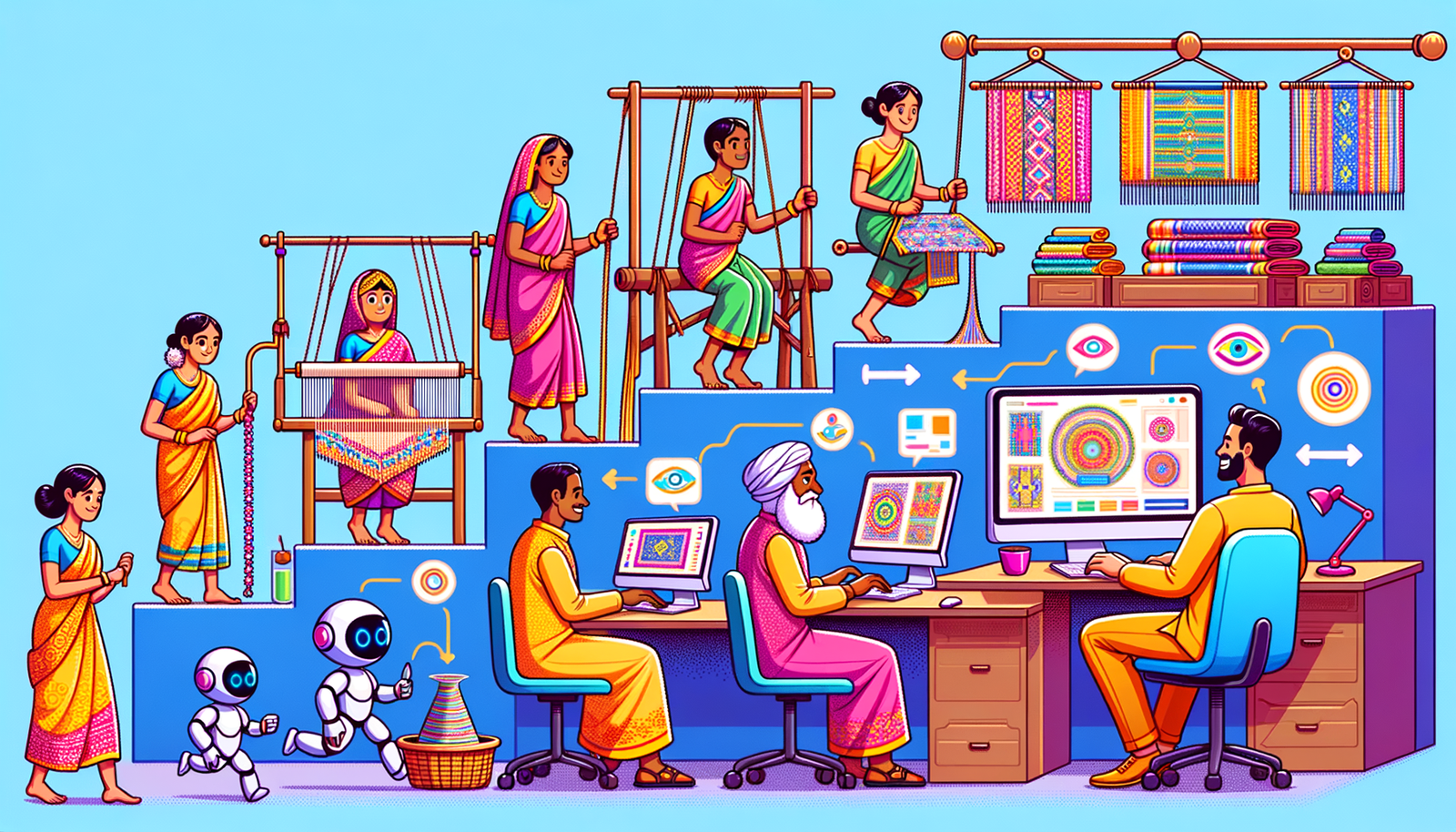Your Cart is Empty
Customer Testimonials
-
"Great customer service. The folks at Novedge were super helpful in navigating a somewhat complicated order including software upgrades and serial numbers in various stages of inactivity. They were friendly and helpful throughout the process.."
Ruben Ruckmark
"Quick & very helpful. We have been using Novedge for years and are very happy with their quick service when we need to make a purchase and excellent support resolving any issues."
Will Woodson
"Scott is the best. He reminds me about subscriptions dates, guides me in the correct direction for updates. He always responds promptly to me. He is literally the reason I continue to work with Novedge and will do so in the future."
Edward Mchugh
"Calvin Lok is “the man”. After my purchase of Sketchup 2021, he called me and provided step-by-step instructions to ease me through difficulties I was having with the setup of my new software."
Mike Borzage
Design Software History: The Digital Threads: Evolution of Design Software in the Textile and Fashion Industry
November 18, 2024 6 min read


The textile and fashion design industry has long been a cornerstone of global culture and economy, weaving together threads of creativity, innovation, and tradition. From the earliest hand-spun fabrics to the haute couture of modern runways, the industry has continuously evolved, reflecting societal changes and technological advancements. In recent decades, a significant shift has occurred as technology has become deeply embedded in design processes. The integration of software into textile and fashion design has not only streamlined workflows but also expanded the horizons of creativity and precision. As the industry marches forward into the digital age, the role of design software has become increasingly vital, revolutionizing the way designers conceptualize, create, and collaborate.
Early Tools and Techniques in Textile Design
Before the advent of computers, textile and fashion design relied heavily on manual tools and techniques. Designers sketched their ideas on paper, painstakingly drafting every detail by hand. Drafting and sketching were the foundational skills every designer honed, allowing them to bring their imaginative concepts to life. Patterns were created using rulers, compasses, and French curves, requiring meticulous attention to detail and a significant investment of time. Fabrics were manually woven on looms, and color schemes were tested through hand-painted swatches. This artisanal approach, while rich in tradition and craftsmanship, posed limitations in terms of scalability and repeatability. Mistakes often meant starting over, and the physical storage of designs became cumbersome as collections grew.
Transition to Early Computer-Aided Design Tools
The dawn of the computer age in the mid-20th century began to influence various industries, and textile and fashion design were no exceptions. The introduction of Computer-Aided Design (CAD) in the 1980s marked a watershed moment. Early CAD systems provided designers with new tools to create and modify designs with greater ease and accuracy. Companies like Gerber Technology pioneered CAD solutions tailored for the apparel industry, enabling digital pattern making and grading. This transition from manual processes to digital platforms allowed for faster iterations and more precise measurements. Designers could now visualize alterations in real-time, reducing the need for multiple physical prototypes. The initial CAD systems, though primitive by today's standards, laid the groundwork for the sophisticated software tools that would emerge in the following decades.
Key Milestones in the Development of Fashion Design Software
The evolution of fashion design software has been marked by significant milestones that have progressively enhanced the capabilities available to designers. In the 1990s, the integration of graphical interfaces and improved computing power made design software more accessible and user-friendly. Adobe Illustrator emerged as a versatile tool for creating detailed vector graphics, becoming a staple in the designer's toolkit. The late 1990s and early 2000s saw the advent of specialized software like Optitex, which introduced 3D modeling and simulation to fashion design. This allowed designers to create virtual prototypes, reducing material costs and accelerating the design cycle. The development of pattern-making software revolutionized the way garments were constructed, offering precision and consistency in sizing and fit. These advancements not only improved efficiency but also opened new avenues for creativity and innovation in design.
Overview of Key Software Tools
Today, the landscape of textile and fashion design software is rich with powerful tools that cater to various aspects of the design process. Adobe Illustrator continues to be a fundamental application for creating and manipulating detailed design elements. Its robust set of features allows for intricate pattern designs, color exploration, and seamless integration with other Adobe Creative Cloud applications. Gerber Technology remains a leader with its AccuMark software, which provides advanced pattern design, grading, and marker making solutions. Optitex offers comprehensive 2D and 3D software solutions, enabling designers to visualize garments in three dimensions and simulate fabric behavior. These tools collectively empower designers to work more efficiently, experiment with new ideas, and produce higher-quality designs.
Features of Modern Design Software
Modern design software encompasses a wide array of features that have transformed the traditional design workflow. Pattern making software allows for precise construction of garment patterns, accommodating various sizes and fit adjustments with ease. The integration of 3D modeling enables designers to create virtual prototypes, visualizing how garments drape and move on the human form without the need for physical samples. Simulation tools can mimic fabric properties, providing insights into how different materials will perform. Advanced rendering capabilities produce photorealistic images of designs, facilitating impactful presentations and marketing materials. Additionally, many software platforms offer cloud-based collaboration features, allowing teams to work together in real-time regardless of geographical location.
- Pattern Making: Precise creation and adjustment of garment patterns.
- 3D Modeling and Simulation: Visualization of garments in three dimensions, simulating fabric behavior.
- Rendering: High-quality, photorealistic images for presentations and marketing.
Role of Innovative Technologies in Design Processes
The infusion of innovative technologies such as Artificial Intelligence (AI), cloud computing, and Virtual Reality (VR) has further propelled the capabilities of design software. AI algorithms assist designers by predicting trends, generating design variations, and optimizing manufacturing processes. Cloud computing offers scalable resources for storage and processing, enabling complex simulations and collaborative work environments. VR provides immersive experiences, allowing designers and clients to interact with virtual garments in a realistic setting. These technologies not only enhance efficiency but also open new dimensions for creativity and user engagement. The combination of AI, cloud, and VR technologies is redefining the boundaries of what is possible in textile and fashion design.
Transformation of Design Workflows and Manufacturing
The impact of software on the textile and fashion industry extends beyond design into manufacturing and sustainability. Advanced software tools have streamlined design workflows, reducing the time from concept to production. Digital prototyping minimizes the need for physical samples, cutting down on material waste. Software-driven precision in pattern making and cutting has improved manufacturing efficiency and product quality. Furthermore, the integration of design software with manufacturing systems supports just-in-time production models, reducing inventory costs and environmental impact. The ability to simulate and test designs digitally also contributes to more sustainable practices by minimizing resource consumption.
The Emergence of Collaborative Platforms
Globalization has emphasized the need for effective collaboration among designers, manufacturers, and retailers across different regions. Collaborative platforms have emerged as essential tools for coordinating efforts in real-time. Cloud-based design software allows multiple stakeholders to access and contribute to design projects simultaneously. Features like version control, annotations, and instant feedback facilitate seamless communication. This is particularly important for global fashion brands that manage extensive supply chains and diverse teams. Collaborative platforms enhance agility, enabling faster responses to market trends and customer demands. They also foster innovation by bringing together a diversity of ideas and perspectives.
Predictions for Future Advancements in Design Software
Looking ahead, the future of textile and fashion design software is poised for exciting advancements. The integration of Artificial Intelligence will likely become more pronounced, with AI-driven design assistants offering suggestions, automating routine tasks, and enhancing decision-making processes. Augmented Reality (AR) could transform how consumers interact with fashion, allowing virtual try-ons and personalized customization. Blockchain technology has the potential to improve transparency and traceability in supply chains, addressing concerns about sustainability and ethical sourcing. Additionally, the development of more sophisticated simulation tools could enable designers to experiment with innovative materials and production techniques virtually. These advancements will continue to shape how the industry operates, emphasizing agility, sustainability, and customer engagement.
Summary of the Evolution and Impact of Design Software
The evolution of design software in the textile and fashion industry reflects a broader trend of technological integration that enhances creativity and efficiency. From the rudimentary CAD systems of the 1980s to today's sophisticated 3D modeling and AI-powered tools, software has fundamentally transformed design processes. Designers now have unprecedented capabilities to visualize, modify, and perfect their creations with precision and speed. The impact extends to manufacturing, where software-driven processes improve quality and sustainability. Collaborative platforms connect global teams, fostering innovation and responsiveness. The industry's embrace of technology has not only elevated the art of fashion design but also addressed practical challenges related to production and environmental stewardship.
Embracing Technological Tools for Future Design Practices
As technological innovations continue to emerge, their potential to shape future design practices is immense. Designers are encouraged to embrace these tools, leveraging them to push the boundaries of creativity and efficiency. The integration of emerging technologies such as AI, AR, and blockchain will open new possibilities for personalization, sustainability, and consumer engagement. By staying attuned to technological advancements, designers can remain at the forefront of industry trends, driving innovation and setting new standards of excellence. The fusion of artistic vision with technological prowess will define the future of textile and fashion design, making it an exciting time for professionals in the field.
In conclusion, the journey of design software in the textile and fashion industry is a testament to the transformative power of technology. It has revolutionized every facet of the industry, from design and manufacturing to collaboration and sustainability. As the landscape continues to evolve, embracing technological tools is not just an option but a necessity for designers seeking to enhance their creativity and efficiency. The future holds immense promise, and those who adapt will lead the charge in shaping the fashion of tomorrow.
Also in Design News

AutoCAD Tip: Quick DIMSTYLE Setup for Standards-Compliant Dimensions
December 05, 2025 2 min read
Read MoreSubscribe
Sign up to get the latest on sales, new releases and more …




